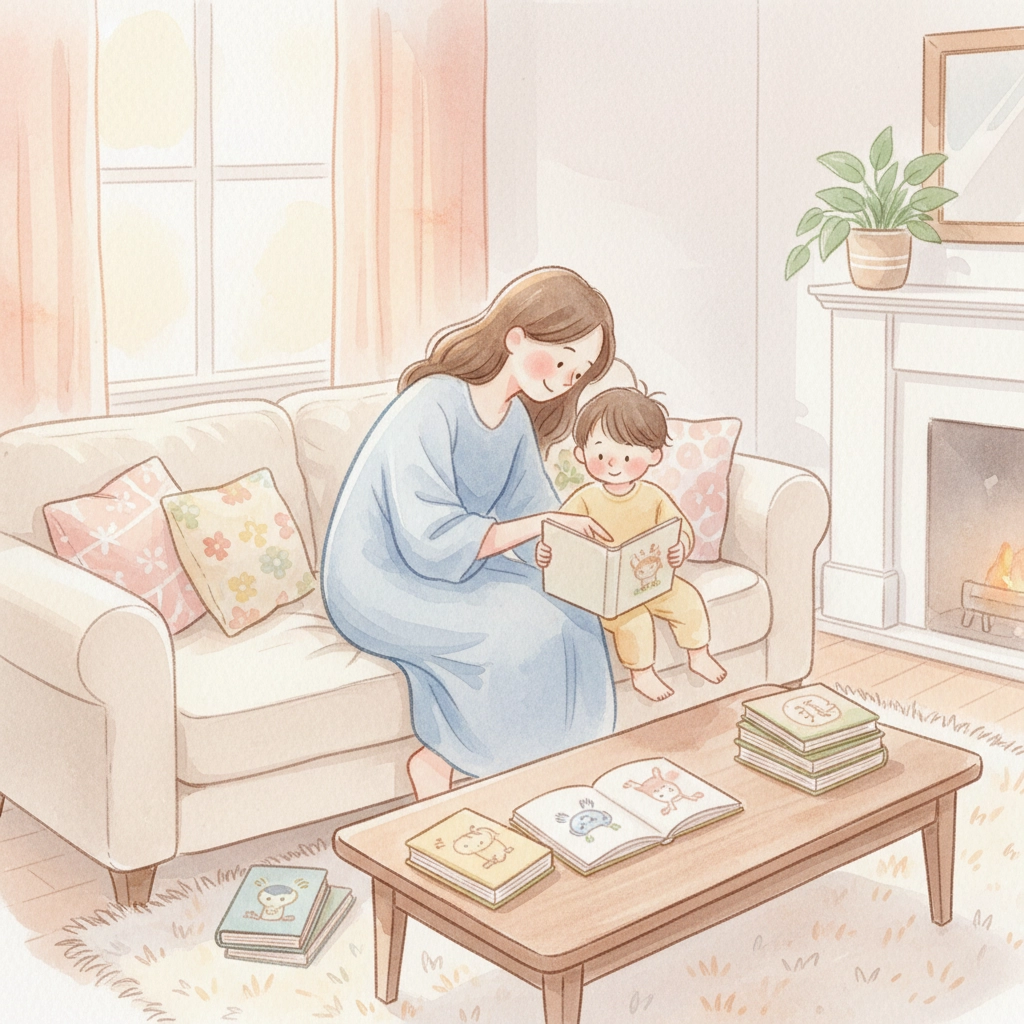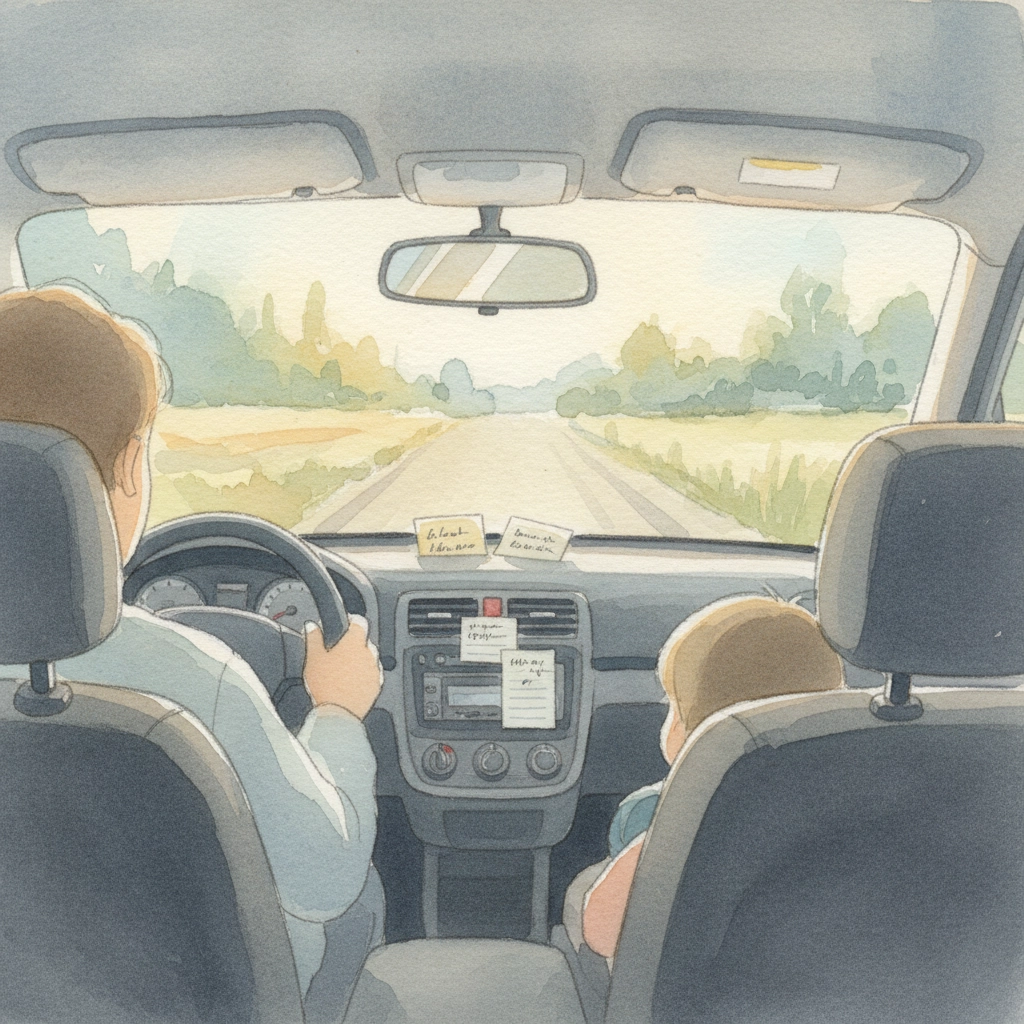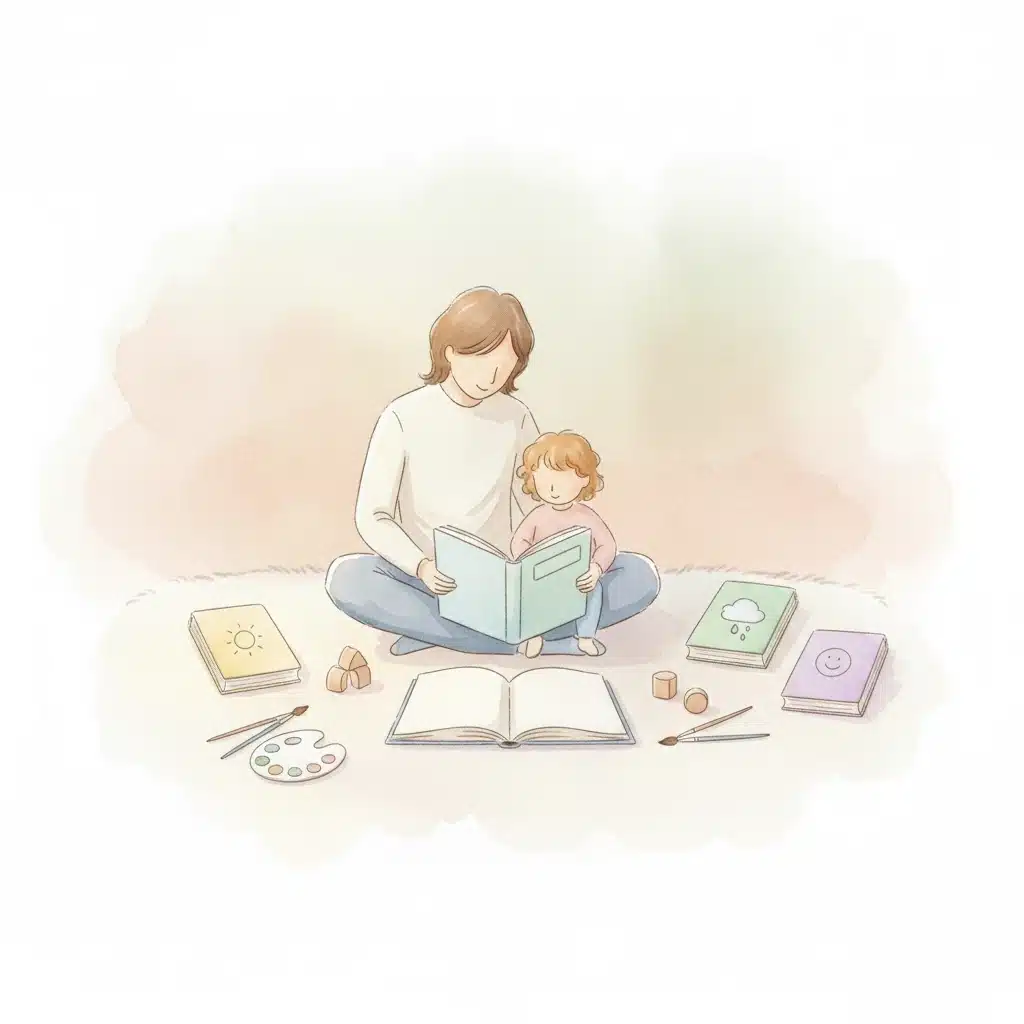You’re already juggling seventeen different things before breakfast, and the last thing you need is another “perfect parenting hack” that requires color-coded charts and a Pinterest-worthy setup. But here’s the thing about social emotional learning books: they’re not another item to add to your already overwhelming to-do list. They’re actually a sneaky way to make the parenting you’re already doing more effective.
You know those moments when your kid melts down because their sibling looked at them wrong? Or when bedtime becomes a negotiation worthy of international diplomacy? SEL books for kids aren’t going to magically eliminate these moments (sorry, no such luck), but they will give you and your child a shared language for navigating them.
Why Your Daily Routine is Already Perfect for SEL
Here’s what most books for parents about SEL won’t tell you—you don’t need to become a certified emotional intelligence coach to help your child develop these skills. The magic happens in those ordinary moments: the car ride to school, the ten minutes before bed, the time it takes to eat a snack.
Children’s books about emotions work best when they’re woven into life as it already happens, not scheduled into some perfect “learning time” that exists only in parenting magazines. Your child is already having feelings all day long (we know you’ve noticed). The books just give you both better tools for talking about them.
Think about it: when your child has a friendship drama at school, you’re already going to talk about it. When they’re frustrated about a toy that won’t work, you’re already there managing the moment. Social emotional learning books just give you a head start on these conversations.

The Art of Choosing SEL Books That Actually Work
Not all books are created equal, and you definitely don’t need a library’s worth to make an impact. Focus on books that address the specific topics that come up most in your family: maybe it’s respect, kindness, empathy, or self-control.
Look for stories where characters face real problems (not sanitized, everyone-gets-along-perfectly scenarios). Your kid needs to see characters who feel genuinely frustrated, sad, or angry—and then figure out what to do about it. Books like Do Unto Otters or How Full is Your Bucket for Kids work because they don’t talk down to children or pretend emotions are simple.
Here’s a pro tip: organize your SEL collection by challenge, not age. Having trouble with sharing? Grab your sharing books. Dealing with big feelings about starting school? Time for your transition books. This makes it easy to reach for exactly what you need when real life hands you a teachable moment.
5-Minute Activities That Actually Fit Into Real Life
Morning Emotion Check-In (3 minutes)
After reading a book about feelings the night before, spend breakfast asking your child to draw their current emotion on a napkin. Not an elaborate art project, literally just a smiley face, frowny face, or confused squiggle. Ask them to explain why they feel this way and if any character from recent books felt similarly. This creates a daily ritual that builds emotional vocabulary without requiring any prep work.
Car Ride Character Conversations (5 minutes)
Keep a small stack of index cards in your car with questions like “What would you say to a friend who was crying?” or “How do you think the character felt when everyone laughed?” Pull one during your commute and discuss as a family. The beauty of this activity is that your kids are literally trapped in the car with you!

Puppet Drama Therapy (4 minutes)
Use any stuffed animal or even your own hands as “puppets” to act out situations from books where characters experienced big emotions. Your child becomes the director, telling the puppet what to do when it feels mad, sad, or excited. This makes abstract concepts concrete and gives kids a safe way to practice responses to difficult situations.
Gratitude Speed Round (2 minutes)
Following books about sharing and gratitude, do a quick family round where everyone mentions one thing they’re grateful for that day. Connect it back to characters or situations from recent reads. The time limit keeps it moving and prevents it from becoming a chore.
Rose, Bud, Thorn (5 minutes)
In our house, we often do “Rose, Bud, Thorn” during dinner together. We go around the table and each take turns sharing our Rose, which is something that happened recently that we liked, Bud, which is something we’re looking forward to, and Thorn, which is something that happened recently that we didn’t like.
Emotion Sorting Game (5 minutes)
After reading books featuring different emotions, create a quick matching game where your child connects emotion words to facial expressions or situations from the stories. You can do this with simple drawings on scrap paper or even just verbal connections. No laminating required.
Making It Sustainable (Because Perfection is Overrated)
The goal isn’t to become the Pinterest parent who has color-coded emotion wheels and perfectly organized book displays. The goal is to build SEL into your life rather than add it on top of everything else.
Start with one book per week and one activity that naturally fits your family’s rhythm. Maybe you’re a bedtime story family: perfect, that’s your SEL time. Maybe you do better with car conversations: excellent, keep those index cards handy. Maybe your best parenting happens during afternoon snack time: SEL books work great with crackers and apple slices.
Tell other family members (partners, grandparents, babysitters) about the books you’re reading and the language you’re using. When everyone is reinforcing the same concepts, kids see that emotional intelligence matters everywhere, not just during “book time.”

The Garden Wolf Approach: Real Books for Real Families
At Garden Wolf Publishing, we believe SEL books for kids should feel like stories first, lessons second. Our approach focuses on creating books that children actually want to read, not books that feel like vegetables disguised as dessert.
Take our book Namooste: it introduces mindfulness and emotional awareness through yoga and storytelling, but kids experience it as an adventure, not a lecture. The SEL elements are woven throughout the narrative, giving you natural conversation starters without the heavy-handed “what did we learn today?” feeling.
We also know that parents need books for educators SEL approaches that work in real homes with real schedules. That’s why our resources focus on integration rather than addition: you don’t need to become a different parent to use these effectively.
What This Actually Looks Like in Practice
Let’s be real for a moment—some days, you’ll nail the emotion check-in and have meaningful conversations about empathy and kindness. Other days, you’ll be lucky if everyone gets fed and no one has a complete meltdown in public. Both are perfectly normal.
The beauty of integrating social emotional learning books into daily parenting is that the opportunities keep coming. Miss the morning check-in? There will be another emotional moment before lunch (probably several). Forget to do the gratitude round? Tomorrow’s bedtime story offers another chance.
Your child isn’t keeping score of perfect SEL moments. They’re absorbing the overall message that feelings matter, that there are words for what they’re experiencing, and that you’re there to help them navigate it all.
Building Your Family’s Emotional Intelligence Library
You don’t need fifty books to make this work. Start with a small collection that addresses your family’s most common challenges. Focus on books that offer multiple entry points for conversation: stories rich enough to revisit without boredom.
Consider starting with our free SEL poster download to get a feel for how these concepts can be visually reinforced in your home. It’s a simple way to keep emotion vocabulary visible without creating clutter.
Remember: the best children’s books about emotions are the ones your family actually reads together. A simple story that sparks genuine conversation will always beat an elaborate curriculum that sits unused on the shelf.
The goal isn’t to raise perfect children with perfect emotional regulation. The goal is to give your kids and yourself better tools for the perfectly imperfect experience of being human. And honestly? Five minutes at a time is exactly the right pace for that kind of learning.

